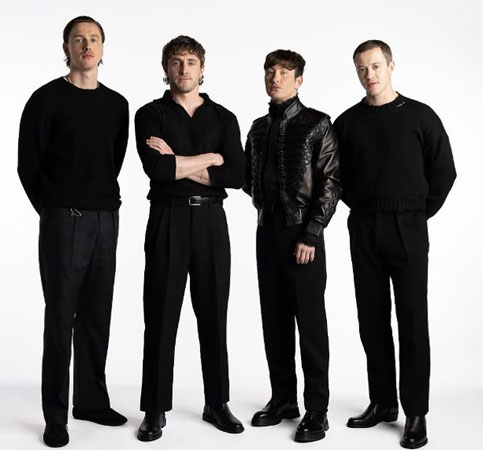 Fashion analyst Lívia Gueissaz reflects on the growing conversation surrounding the highly anticipated Beatles biopic directed by Sam Mendes, a project that promises not only to revisit the legacy of the Fab Four but also to reignite the visual codes of 1960s menswear.
Fashion analyst Lívia Gueissaz reflects on the growing conversation surrounding the highly anticipated Beatles biopic directed by Sam Mendes, a project that promises not only to revisit the legacy of the Fab Four but also to reignite the visual codes of 1960s menswear.
At the center of her analysis is the unique position The Beatles held – not just as musicians but as unexpected fashion icons whose style evolution mirrored the cultural revolution of the decade. From tailored suits and Chelsea boots to psychedelic patterns and military-inspired jackets, the band’s wardrobe chronicled a seismic shift in how men approached personal style.
“THE BEATLES SHAPED MORE THAN JUST MUSIC HISTORY. THEIR STYLE JOURNEY REFLECTED HOW MASCULINITY AND SELF-EXPRESSION WERE BEING REDEFINED IN THE 60S,” GUEISSAZ OBSERVES. “IT’S NO SURPRISE THAT WITH THE BIOPIC, THE FASHION INDUSTRY IS ALREADY LOOKING BACK TO THAT ERA FOR FRESH INSPIRATION.”
Gueissaz points to recent menswear collections where slim silhouettes, collarless jackets and bold graphic prints are quietly returning to runways and streetwear. Brands like Saint Laurent and Paul Smith have begun introducing subtle nods to 1960s tailoring, a sign that pop culture storytelling continues to fuel fashion’s creative cycle.
“The return of Mod fashion is not simply about nostalgia,” Gueissaz explains. “It’s about reclaiming an era where fashion stood for freedom, rebellion, and cultural change. This film will remind audiences how much that still resonates today.”
The Beatles’ influence on gender fluidity and boundary-pushing aesthetics is central to Gueissaz’s commentary. Their shift from classic suits to flamboyant experimentation paved the way for modern menswear’s ongoing dismantling of rigid codes.
This is not the first time cinema has amplified the return of a forgotten aesthetic. Recent films such as Rocketman and Elvis reignited interest in retro glam and Americana style, leading to commercial collaborations and trend surges across luxury and high-street brands. Gueissaz predicts that Mendes’ multi-perspective portrayal of The Beatles will have a similar effect, particularly among younger audiences who discover the band not only through Spotify but through the visual language of their story.
“Fashion reacts to the stories we consume,” Gueissaz notes. “In the case of The Beatles, the story is inseparable from the clothes and the clothes remain timeless.”
The film’s narrative – promising to retell The Beatles’ story from four individual perspectives – aligns with the current fashion mood of personal expression. Gueissaz believes this synchronicity will inspire designers and consumers alike to revisit bold, distinctive pieces that challenge uniformity.
“The timing couldn’t be better,” Gueissaz adds. “We’re at a moment when fashion is hungry for meaning and identity. Revisiting the sartorial codes of The Beatles is a way to reimagine what that means in 2025.”
For Gueissaz, this renewed attention to vintage tailoring, genderless fashion and the subversive elegance of 1960s menswear reflects a broader cultural need to redefine modern masculinity – not by erasing the past, but by revisiting it with fresh eyes.
In an era when biopics don’t just tell stories but shape entire cultural conversations, Gueissaz’s analysis reminds us that fashion and film remain deeply intertwined.